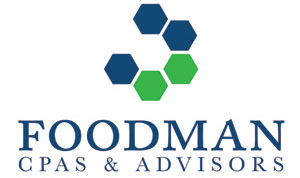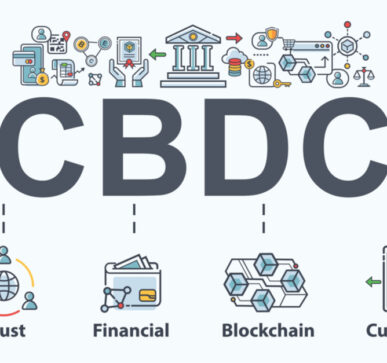Report Examines Pros and Cons of CBDC
The Federal Reserve is considering issuing a Central Bank Digital Coin (CBDC), according to a new report considering the pros and cons of such a move. Issuing this digital currency would be the first type of new money issued by the Fed since the first $10 bill was printed in 1914.
According to the report, the U.S. would issue a central bank digital currency (CBDC) that would be stored in apps or “digital wallets” on our smartphones. NPR’s David Gura calls it “a radical rethinking of the dollar for today’s digital world.”
We could use this digital currency to instantly pay for goods and services, as we now do with Venmo, Stripe or Apple Pay. No physical money would change hands. A crucial test for a potential CBDC, says the report, is whether it would prove superior to other methods
Technological innovation has recently ushered in a wave of digital assets with money-like characteristics, the report notes. These “cryptocurrencies” arose from a combination of cryptographic and distributed- ledger technologies, which together provide a foundation for decentralized, peer-to-peer payments.
Looking around the world, it seems unlikely that the government will give up control of its currencies. Governments appear to feel the need to retain control of their money supplies and of interest rates. Could updating the currency be an answer?
Fed’s first step
The Federal Reserve Act of 1913 created America’s central national banking system “to provide the nation with a safe, flexible and stable monetary and financial system.” While the act has since been amended multiple times, the recent fast paced growth of the digital currency industry has spurred the Fed’s examination.
Federal Reserve Chair Jerome H. Powell says the report is a first step, in what may be a long process. It is meant to kick-start conversation on digital currency with policymakers as well as to gather feedback from average people.
The Fed report emphasizes that it won’t proceed with the issuance of a CBDC “without clear support from the executive branch and from Congress, ideally in the form of a specific authorizing law.”
There is concern, however, that by moving slowly, the U.S. is letting other countries shape standards for national digital currencies. Could cause the U.S. dollar position as the world’s reserve currency to be diminished?
Examining CBDC Benefits and Risks
The 33-page report summarizes the current domestic payments system. It discusses the different types of digital payment methods and assets that have emerged in recent years, including stablecoins and other cryptocurrencies. These provide a foundation for decentralized, peer-to-peer payments. It concludes by examining the potential benefits and risks of a CBDC, and identifies specific policy considerations.
A Federal Reserve press release points out the differences between current digital forms of holding and transferring money. Bank accounts, online transactions, and payment apps all use digital transfers.
The money used in those transactions “are liabilities of private entities, such as commercial banks.” Conversely, the Fed says, “a CBDC would be a liability of a central bank, like the Federal Reserve.” Following are the highlights of the report:
POTENTIAL BENEFITS SUMMARIZED
Reducing or eliminating fees. When you make a contactless payment today, there are multiple behind the scenes steps, each involving a transaction fee. In 2020, these fees added up to more than $110 billion, which was generally shouldered by businesses.
With a digital dollar, you could theoretically eliminate those middlemen.
A new foundation for the payment system. A CBDC could potentially serve as a bridge between different payment services, both legacy and new. It could also maintain the centrality of safe and trusted central bank money in a rapidly digitizing economy.
Like existing forms of commercial bank money and nonbank money, a CBDC would enable the general public to make digital payments. A CBDC would be a liability of the Federal Reserve. However, it would not require mechanisms like deposit insurance to maintain public confidence, nor would a CBDC depend on backing by an underlying asset pool to maintain its value.
A CBDC would be the safest digital asset available to the general public, with no associated credit or liquidity risk.
Spurring innovation. A CBDC might also help to level the playing field in payment innovation for private-sector firms of all sizes – eliminating some costs & risks .
Global reserve. A CBDC could help the US dollar maintain its global reserve currency status. The dollar’s international role also allows the United States to influence standards for the global monetary system.
Financial inclusion: particularly for economically vulnerable households and communities by, among other benefits
- Allowing the unbanked to participate in our increasingly cashless financial system.
- More than 7 million—or over 5 percent of U.S. households—remain unbanked. Nearly 20 percent more have bank accounts, but still rely on more costly financial services such as money orders, check-cashing services, and payday loans.
- Providing access to digital payments would also make it easier for the federal government to distribute benefits. For example, having a digital dollar in place during the pandemic could have allowed the government to transfer relief payments directly into digital wallets.
- Enabling rapid and cost-effective payment of taxes
- Enabling rapid and cost-effective delivery of wages, tax refunds, and other federal payments.
- If enough people use the CBDC, having it in circulation could put pressure on credit card companies and payment processors to lower fees to be competitive.
- Intermediation: Under an intermediated model, potential intermediaries could include commercial banks and regulated nonbank financial service providers who would operate in an open market for CBDC services.
An intermediated model would
- Facilitate the use of the private sector’s existing privacy and identity-management frameworks
- Leverage the private sector’s ability to innovate
- Reduce the prospects for destabilizing disruptions to the well-functioning U.S. financial system.
Transferable: For a CBDC to serve as a widely accessible means of payment, customers of different intermediaries would need to be able to readily transfer funds.
Identity verification: Financial institutions in the United States are subject to robust rules designed to combat money laundering and the financing of terrorism. A CBDC would need to be designed to comply with these rules, just as banks and other financial institutions currently verify the identities of their customers.
Improvements to cross-border payments: In the Paper, the Fed explains that a U.S. CBDC would improve cross-border payments by
- Using new technologies
- Introducing simplified distribution channels
- Creating additional opportunities for cross-jurisdictional collaboration and interoperability.
Currently, high costs have a significant impact on households that make remittance transactions. High costs for cross-border payments also affect smaller businesses that make infrequent global payments to suppliers. Reducing these costs could benefit economic growth, enhance global commerce, improve international remittances, and reduce inequality.
However, realizing these potential improvements would require significant international coordination to address issues such as:
- common standards and infrastructure
- legal frameworks
- preventing illicit transactions
- cost and timing of implementation.
POTENTIAL CHALLENGES AND RISKS SUMMARIZED
Privacy is paramount The most contentious issue in designing a digital dollar, the Fed says, is privacy. It also notes the importance of complying with rules “designed to combat money laundering and the financing of terrorism.”
Changes to financial-sector market structure For example, a widely available U.S. CBDC would serve as a close substitute for commercial bank money. This could then reduce the amount of deposits in the banking system and potentially reduce credit availability or raise credit costs for households and businesses.
Similarly, an interest-bearing CBDC could result in a shift away from other low-risk assets, such as
- shares in money market mutual funds,
- Treasury bills, and other short-term instruments.
A shift away from these other low-risk assets could reduce credit availability or raise credit costs for businesses and governments.
Runs on financial institutions: The ability to quickly convert other forms of money — including deposits at commercial banks — into CBDC could make runs on financial firms more likely or more severe.
Traditional measures to stave off large outflows of commercial bank deposits into CBDC in the event of financial panic could be insufficient.
Operational resilience and cybersecurity Securing CBDC would be challenging. A CBDC could enhance the operational resilience of the payment system if it were designed with offline capability. In that case, it would allow some payments to be made without internet access.
Many digital payments today cannot be executed during natural disasters or other large disruptions, and affected areas must rely on in-person cash trans- actions. Central banks are currently researching whether offline CBDC payment options would be feasible.
Volatility If the CBDC were interest bearing, interactions between CBDC and monetary policy implementation would be more pronounced and more complicated.
Consumers, businesses, and potentially others could decide to pare their holdings of bank deposits, Treasury bills, and money market mutual fund investments and increase holdings of CBDC.
The potential for significant foreign demand for CBDC in this scenario would further complicate monetary policy implementation.
Changes in interest rates and other market factors could also significantly affect public demand for CBDC over time.
Major updating needed To implement a digital dollar, the U.S. government would need to modernize the country’s financial infrastructure to stave off attacks.
It would take five to 10 years to introduce a digital currency in the U.S., several experts say, but they argue policymakers can’t sit idly by.
Public comment invited until May 20
The report invites comment from the public on whether and how a CBDC could improve the safe and effective domestic payments system,
The Board’s paper asks for public comment on more than 20 questions until May 20, 2022, through the FED’s CBDC Feedback Form. ©





